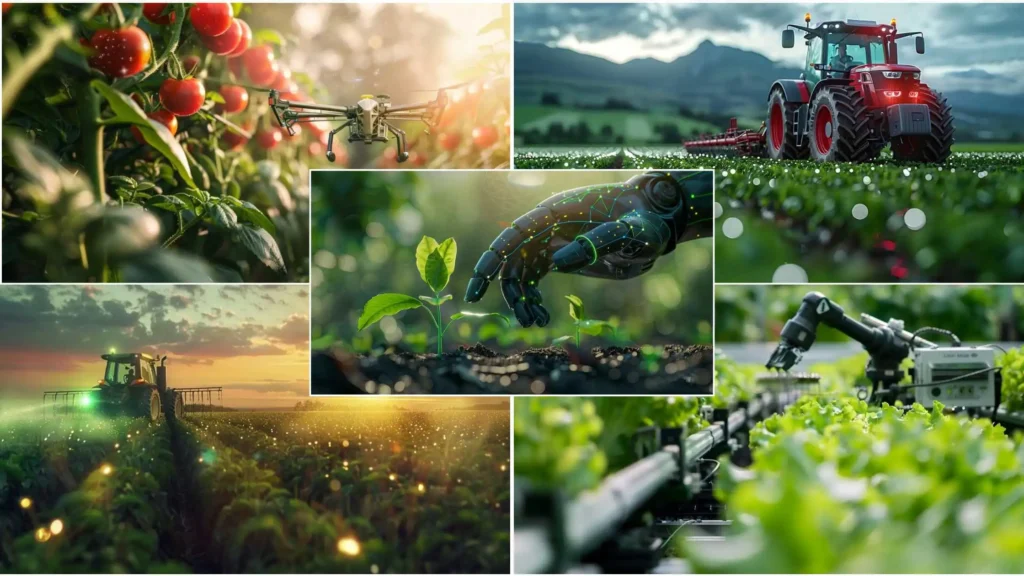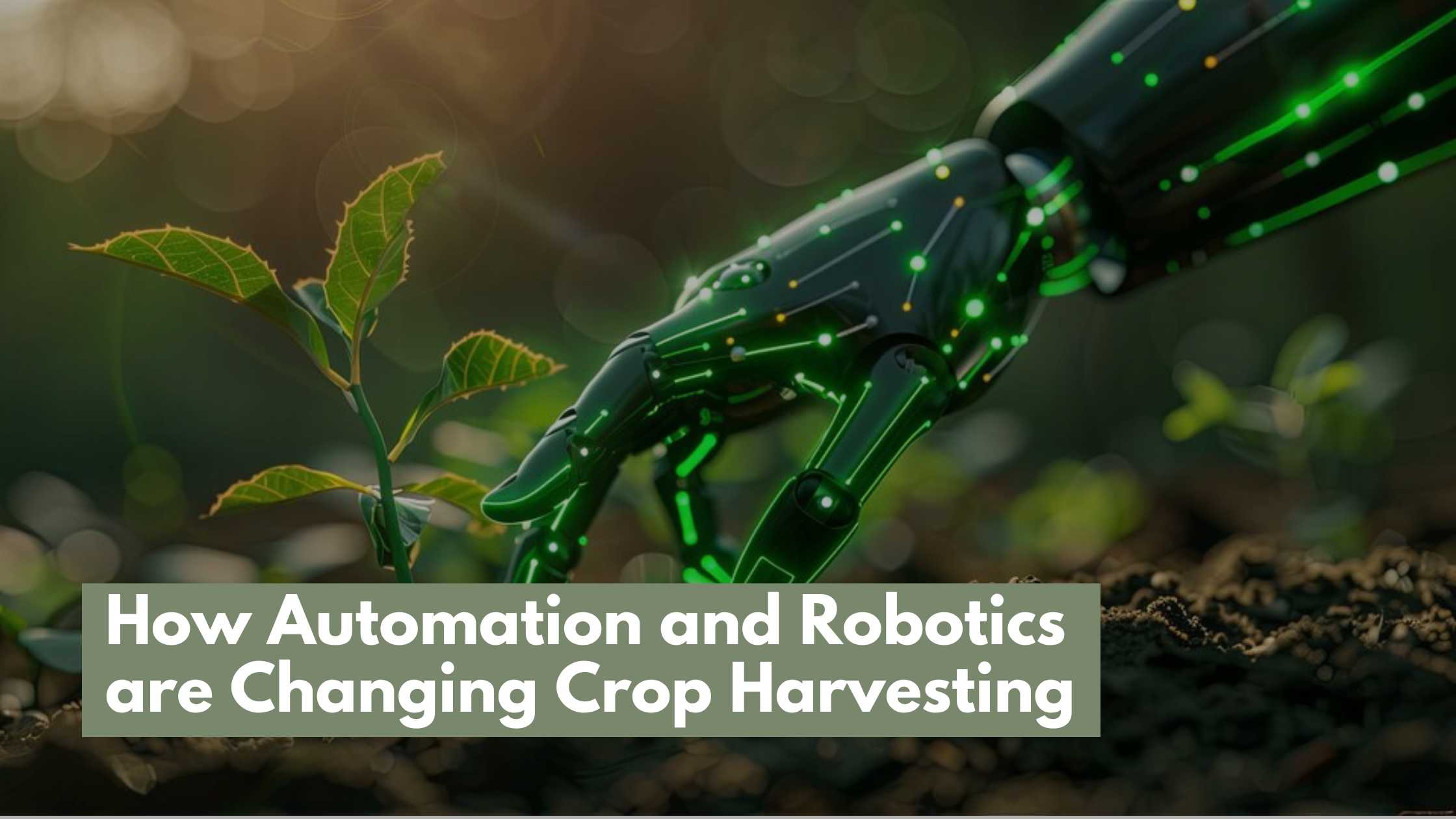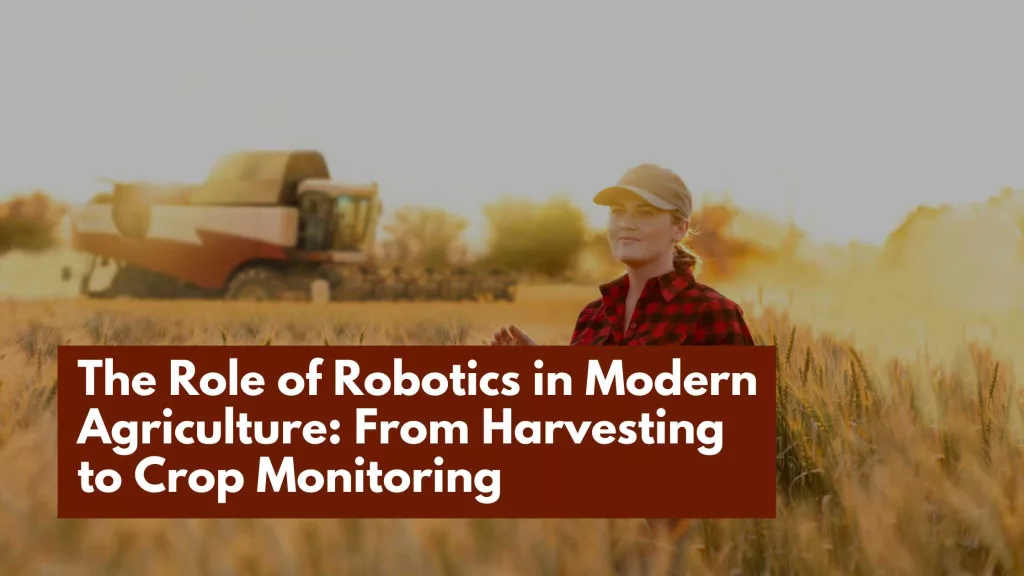Over the centuries, agriculture—the foundation of human civilization—has experienced tremendous change, from the era of manual labour in the early days to the green revolution and the introduction of contemporary machinery. We are currently on the verge of another revolutionary era, this one fueled by robotics and automation. Not only do these technologies supplement human work, but they have the potential to change the agricultural harvesting industry completely. This blog will examine the technology, advantages, difficulties, and potential applications of automation and robotics in crop harvesting.
The Evolution of Crop Harvesting
Crop harvesting has always required a lot of labour and the physical exertion of human labourers. The advent of mechanical instruments, such as combine harvesters, was a big step in productivity and efficiency. These devices still needed a lot of human supervision and operation, though. A paradigm change occurred with the introduction of automation and robotics, which brought sophisticated systems that could complete difficult jobs with little human assistance.
Key Technologies in Automated and Robotic Harvesting

1. Automated Harvesters:
Combine Harvesters: Modern combine harvesters make precision navigation and operation possible with today’s sophisticated sensors and GPS technology. These machines may harvest large fields with little human assistance, maximizing productivity.
Fruit Harvesters: Automated fruit harvesters recognize and choose ripe fruits using robotics and machine vision. Vacuum-based devices have been created by companies such as Abundant Robotics to pick apples carefully without harming them.
2. Drones and UAVs: Drones with multispectral cameras and sensors can identify regions that need to be harvested, monitor crop health, and even apply pesticides. By providing farmers with real-time data, these drones optimize harvest timing and assist farmers in making well-informed decisions.
3. Autonomous Tractors: These machines can be programmed to carry out a range of duties, such as planting, harvesting, and plowing. Tractor manufacturers such as John Deere have created driverless operating tractors that use GPS and sophisticated software to boost productivity and cut labour expenses.
4. Robotic Arms: – Robotic arms can carefully handle and harvest crops. They are frequently employed in conjunction with AI. These machines may be trained to identify various product varieties and identify the best way to select them without causing damage.
5. Artificial Intelligence (AI) and Machine Learning: – AI and machine learning algorithms greatly aid robots’ ability to identify and distinguish between ripe and unripe produce. With continuous learning and development, these technologies enable more precise and effective harvesting.
Benefits of Automation and Robotics in Crop Harvesting
1. Enhanced Productivity and Efficiency: Thanks to automation and robotics, Farmers can cover more regions in less time, drastically reducing harvesting time. This efficiency is significant for perishable crops, which must be collected soon to preserve quality.
2. Mitigation of Labor deficit: – The agricultural industry frequently experiences a labour deficit, especially during the busiest harvest seasons. By doing jobs that would otherwise need a significant workforce, automation can help close this gap.
3. Precision Agriculture: – By using automated technologies to carry out activities with extreme precision, crops may be gathered at the best moment. This accuracy raises yield overall and decreases waste.
4. Cost Reduction: – Although automation and robotics may need a significant initial investment, farmers may find they are a cost-effective option in the long run due to labour cost reductions, greater yield, and less waste.
5. Improved Crop Quality: Compared to human labour, automated devices can handle crops more delicately and precisely, minimizing damage and raising the calibre of the produce that is sold.
Challenges in Implementing Automation and Robotics
1. High Initial Costs: – Small and medium-sized farms may find the up-front costs associated with installing and buying automated equipment unaffordable. This obstacle may prevent these technologies from being widely used.
2. Technical Complexity: The agriculture industry may not easily access the technical know-how needed to operate and maintain sophisticated robotic equipment. Farmers could have to pay for specialized staff or make training investments.
3. Integration with Current Systems: Integrating new technology with current farming equipment and methods can be difficult. Thorough planning and financial commitment are necessary to guarantee compatibility and smooth functioning.
4. Safety and Regulatory Concerns: The use of autonomous machines raises safety and regulatory issues. It is essential to ensure that these devices follow local laws and operate safely around people.
5. Technology Dependence: If automation and robots are relied upon excessively, there may be areas for improvement if the technology malfunctions. Farmers must have backup plans ready to deal with such circumstances.
Case Studies and Real-world Applications
1. Abundant Robotics: Abundant Robotics has created automated apple harvesters that efficiently gather apples using vacuum technology and cutting-edge computer vision. Commercial orchards are the sites of these robots’ testing, indicating their potential for broad use.
2. John Deere Autonomous Tractors: Equipped with machine learning and GPS, these tractors can carry out a range of activities without the need for human assistance. They have been effectively used in fields, demonstrating their capacity to boost output and save labour expenses.
3. Blue River Technology: Blue River Technology, which John Deere acquired, created “See & Spray” technology, targeting specific plants with fertilizer or pesticides using computer vision and machine learning. This precision farming method improves crop health while using fewer chemicals.
Future Prospects of Automation and Robotics in Crop Harvesting
The future of automation and robotics in crop harvesting looks promising, with several trends and advancements on the horizon:
1. Developments in Machine Learning and AI: – Robotic systems will become more capable and adaptable as artificial intelligence and machine learning advance. Robots can manage a more excellent range of crops and duties thanks to these developments.
2. Integration with IoT: – Real-time monitoring and management of agricultural operations will be made possible by integrating automation with the Internet of Things (IoT). Thanks to sensors across the farm that can supply data to automated systems, every part of the harvesting process can be optimized.
3. Collaborative Robots (Cobots): – Collaborative robots, also known as Cobots, are expected to increase. These robots are intended to operate in tandem with human workers. Because these cobots can handle repeated tasks, human workers can concentrate on more intricate and decision-intensive jobs.
4. Sustainable Farming Practices: – Automation and robots can assist with sustainable agricultural techniques by minimizing soil compaction, maximizing resource use, and lowering the need for chemical inputs. Farmers may better meet the growing demand for ecologically friendly food by utilizing this technology.
5. Customizable Solutions: – Upcoming automated systems will provide more solutions that may be adjusted to meet the unique requirements of various crops and farms. Because of this versatility, automation will become more feasible and accessible for a broader range of agricultural operations.
6. Global Adoption: – Automation and robots in agriculture should become more widely used as technology gets more accessible and affordable. In particular, developing nations stand to gain much from these developments, as they will increase economic stability and food security.
Conclusion
Crop harvesting is revolutionized by automation and robotics, which offer previously unheard-of levels of sustainability, accuracy, and efficiency. Although there are still difficulties, they are greatly outweighed by the advantages, making this an inspiring moment for the agriculture industry. We anticipate many more technological advancements in the future that will revolutionize agricultural methods and increase world food production. Agriculture will become automated, and this process has only just started.




The future prospects for automation in agriculture are very exciting.
Understanding the hurdles in adopting robotics is important – great insights.
The advantages of automation in crop harvesting are clearly laid out.
Robotic technologies are making farming more efficient – love this post!
The historical evolution of crop harvesting is well-presented.
The future of farming with robotics looks incredibly innovative.
Addressing the challenges in implementation is crucial – well covered!
The benefits of using robots in agriculture are undeniable.
Key technologies in automation are paving the way for the future of farming.
The evolution of crop harvesting shows how far we’ve come – great read!
The prospects for automation and robotics in agriculture are promising.
It’s important to understand the challenges in adopting these technologies.
Automation in crop harvesting offers so many advantages – well explained!
This post really breaks down the key technologies in robotic harvesting.
The future of crop harvesting looks bright with automation!
I appreciate the detailed discussion on the challenges of implementing robotics.
The benefits of automation in agriculture are clearly highlighted.
Automated harvesting technologies are impressive – great insights!
This post offers a comprehensive look at the evolution of crop harvesting.
The future prospects of automation and robotics in agriculture are so exciting!
It’s interesting to read about the challenges in implementing these technologies.
Automation and robotics bring so many benefits to crop harvesting – excellent points!
Key technologies in robotic harvesting are truly game-changing.
The evolution of crop harvesting is fascinating – love the historical perspective.
This blog post does a great job explaining how automation is revolutionizing crop harvesting!